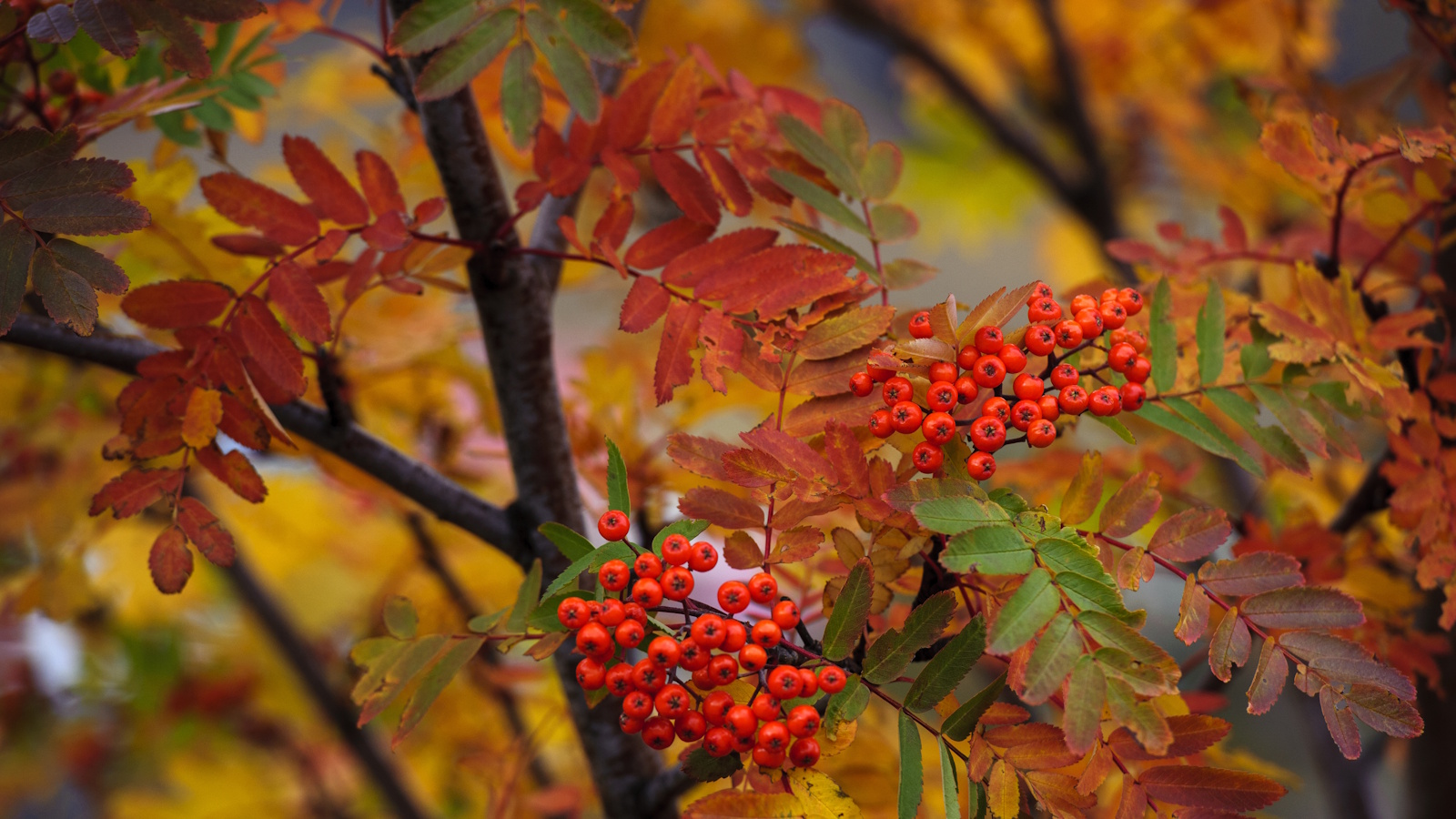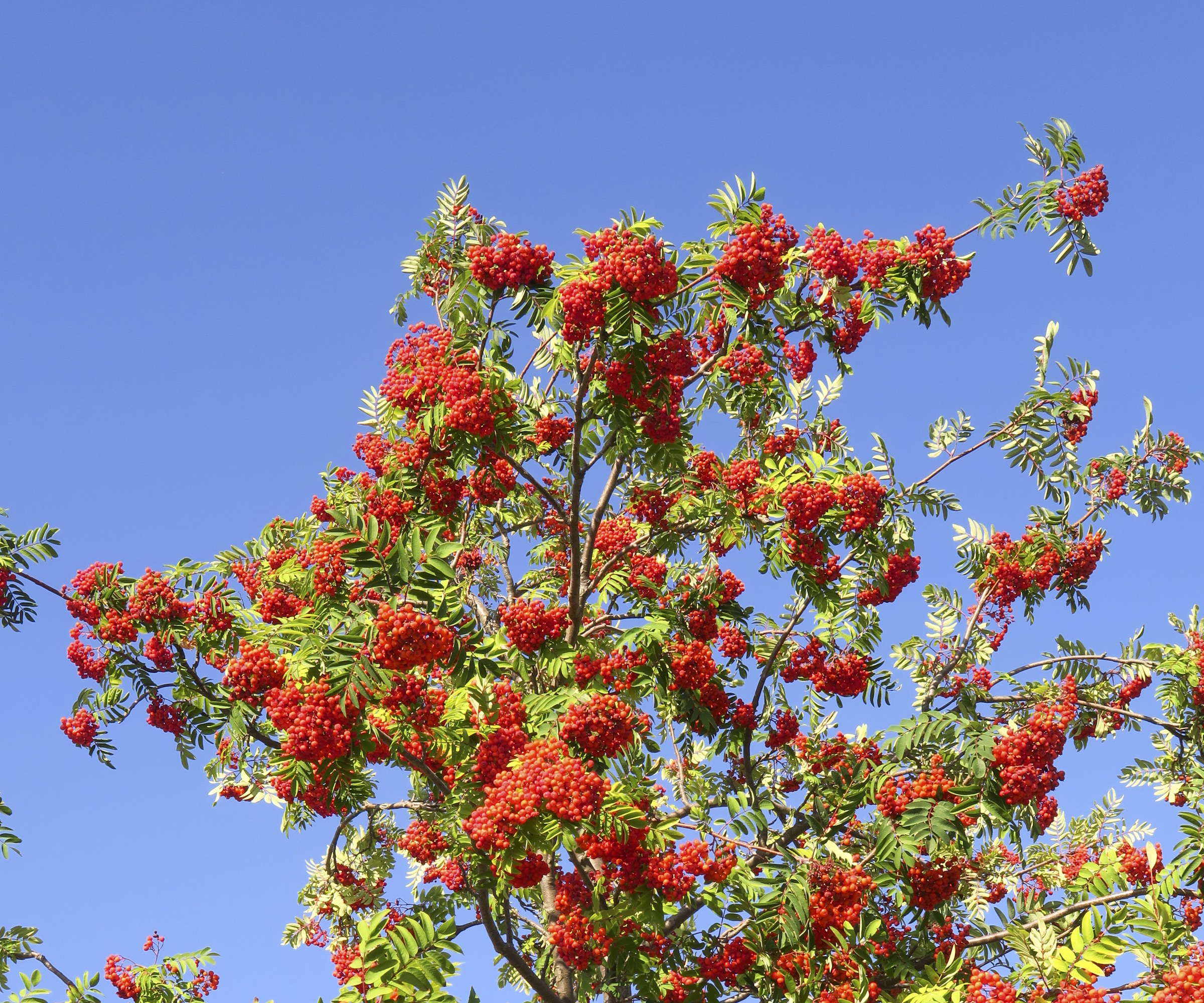
The rowan tree, known as the mountain ash, is a mystical and ancient tree that has long been celebrated in folklore for its ornamental beauty and supposed protective capabilities. For example, in Celtic communities across Wales, Scotland and Ireland, rowan trees were typically planted near villages and homes to ward off evil spirits.
Beyond their protective powers, rowan trees, or Sorbus, tend to be small to medium-sized trees that produce delicate, feathered leaves complemented by vibrant red berries during fall and winter. If you are looking for a compact and low-maintenance species for your plot, the rowan tree ticks all the boxes.
Here, one garden expert reveals all you need to know about how to grow rowan trees to guarantee lush, green foliage and a bounty of colorful berries. So, whether you want to add some color to your borders for fall and winter, or perhaps you are keen to incorporate one of the best statement trees to the corner of your yard, our guide to the rowan tree has all bases covered.

How to grow rowan trees
While color is hard to come by in the fall and winter garden, learning how to grow rowan trees is a good way to guarantee a seasonal display in your yard. After all, who wouldn't enjoy trees or shrubs with fall berries, and the rowan tree is surely one of the best.
Growing habits of rowan trees

'Rowan trees, or Sorbus, are mainly small to medium-sized deciduous trees that can grow to over 50 feet when fully grown,' says Tammy Sons, horticulturist and CEO of TN Nurseries, based in Altamont, Tennessee. 'They are low-maintenance trees, however, and will tolerate regular shaping and pruning to keep them in check.
'Growing best from US hardiness zone 3 to US hardiness zone 6, rowan trees can withstand the cold and frost, so are ideal for cooler regions across North America,' Tammy adds. Live rowan trees are available from Amazon.
While they prefer open, sunny spots, rowan trees tend to have a shallow root system, meaning that in summer, they can quickly dry out. For this reason, it is a good idea to incorporate some of the best ground cover plants to help shade and protect the roots, while also watering as your tree establishes.
'Finally, rowan trees are always popular during the holiday season,' Tammy says, 'celebrated for their charming stems and berries. If you want to use a rowan tree for Christmas decor, select healthy branches and be sure to cut the stems at a forty-five-degree angle. Mist them regularly if they are not being placed in a vase to ensure berries are kept fresh for longer.'
Grow guide for rowan trees

Soil: 'Rowan trees prefer soil that is well-draining and moderately fertile,' continues Tammy. 'They can be grown in yards with soil pH levels that are neutral to acidic, but they thrive most in slightly acidic soils, typically with a pH of 6.5. Rowan trees do not enjoy waterlogged soils, so any yards that are heavy in clay should be amended by mulching to improve drainage.' Mulch is available from Amazon. 'Applying a thick two to three-inch layer of mulch along the top of the soil will help to retain moisture and further suppress weeds.'
Light: 'Rowan trees do best in yards with partial shade to full sun,' Tammy continues. 'For the best growth, they require at least five or six hours of sunlight where the rays hit them directly, which will lead to optimal berry production.'
Watering: 'Watering rowan trees as they establish is important. This involves providing consistent moisture and deep watering during the first two years after planting,' Tammy says. 'Once they are settled in your yard, these trees are both low maintenance and drought-tolerant although some protection for the shallow roots is important.'
Fertilizing: Rowan trees do not need to be fed. This species is relatively self-sufficient, typically accessing the nutrients they need from the soil. To help improve the quality of your borders, mulching once per year will help to give your trees, shrubs and perennials a boost.
Pruning: 'Late winter into early spring, when the tree is dormant, is the optimal time to prune rowan trees,' Tammy says. 'Pruning at this stage reduces the risk of infection or excessive sap loss. Begin by removing dead or diseased branches, and then thinning any crossing or overcrowded stems to improve the possibilities of sunlight penetration and airflow to the center of the tree. Be sure to avoid cutting more than twenty percent of the tree within one year, otherwise, you might shock the tree.'
Toxicity: While they can look plump and delicious, you should avoid eating the fruits from rowan trees. The raw berries contain parasorbic acid that can cause digestive damage to the stomach and kidneys. In addition, you should always wear gardening gloves when pruning rowan trees as the sap can cause skin irritation. Gardening gloves are available from Amazon.
This rounded black pot is made from a plastic-stone composite, making for a cost-effective, durable and lightweight product.
Learning how to grow rowan trees from seed is a cost-effective and fun gardening project. Sow seeds atop a gritty soil mix at any time of year.
This potting mix from Foxfarm is ideal for mulching or using in pots, helping to increase plant growth by retaining moisture and adding nutrients to the soil.
FAQs
Can I grow rowan trees in a pot?
Yes, you can grow a rowan tree in a pot or a container, which is a good option for gardeners with smaller yards. However, regular maintenance will be required to keep your rowan tree in good health. Annual pruning will be important to keep the tree in a compact and bushy shape, and you will also need to repot the rowan tree once every two or three years to provide it with fresh soil and a little more room to grow.
What should I do with suckers and shoots at the base of my rowan tree?
'You can remove any suckers or shoots by simply snipping them or snapping them with your hand,' Tammy says. 'Be mindful to always use sterile tools such as pruning sheers or a small pruning saw for any shoots that are larger. Sterilize each tool between uses to prevent the spread of any infection or disease the previous tree might have been carrying.'
For other unique and interesting trees that have excellent seasonality, why not consider learning how to grow spindle trees? With striking orange and pink fruits, spindle trees can help to prolong interest during the fall months in any plot, and fortunately for us, they are surprisingly easy to grow.







